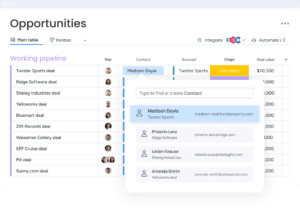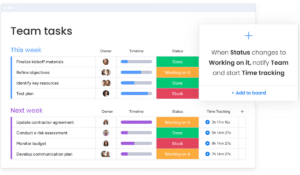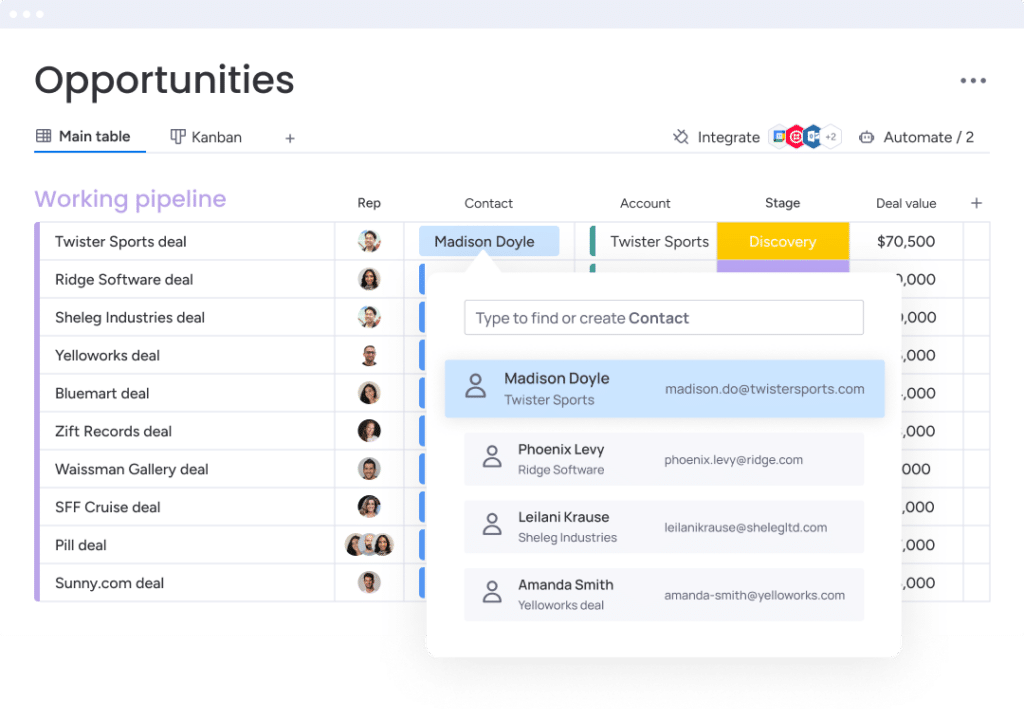As a business owner or manager, you’re constantly looking for ways to improve your bottom line. One tool that can help you achieve this is a customer relationship management (CRM) system. CRM systems allow businesses to manage customer data, track interactions with customers, and automate various sales and marketing processes. But how do you know if your CRM system is delivering a positive return on investment (ROI)?
In this article, we’ll explore the concept of CRM ROI and why it’s important for businesses to measure it. We’ll discuss the factors that can impact the ROI of a CRM system and the benefits of measuring ROI for businesses. We’ll also provide tips on how to measure CRM ROI and overcome some of the challenges that businesses may face in doing so. Finally, we’ll offer advice on how to improve your CRM ROI and get the most out of your CRM system.
What is CRM ROI?
Let’s start by defining what we mean by CRM ROI. CRM ROI refers to the return on investment that a business receives from its CRM system. In other words, it’s a way of measuring the financial impact that a CRM system has on a business. This can be measured in a variety of ways. These include increased sales revenue, improved customer retention, or reduced marketing costs.
Factors that Impact CRM ROI
As we mentioned earlier, there are several factors that can impact the ROI of a CRM system. Let’s take a closer look at some of these factors:
Implementation Costs
Implementing a CRM system can be expensive, and these costs need to be factored into the ROI calculation. However, it’s important to remember that these costs are typically upfront costs, while the benefits of the CRM system may be ongoing.
Timeframe
The timeframe over which you measure CRM ROI can impact the results. For example, if you measure ROI over a short period of time, you may not see the full impact of the CRM system on your revenue.
Accuracy of Data
To accurately measure CRM ROI, you need to ensure that your data is accurate and complete. If your data is incomplete or inaccurate, your ROI calculation may be flawed.
Business Goals
The goals of your business can impact the ROI of your CRM system. For example, if your goal is to increase customer retention, your ROI calculation may be based on metrics such as customer churn rate or customer lifetime value.
By taking these factors into account, you can get a more accurate picture of the ROI of your CRM system. In the next section, we’ll discuss the benefits of measuring CRM ROI for businesses.
Benefits of Measuring CRM ROI
Measuring CRM ROI offers several benefits for businesses. Let’s take a look at some of the key advantages:
Understand the Impact of your CRM System
By measuring CRM ROI, you can get a better understanding of the impact that your CRM system is having on your business. This can help you identify areas where the CRM system is working well and areas where improvements could be made. For example, if you’re seeing a high ROI from your CRM system in terms of customer retention, you may want to invest more in initiatives that focus on building customer loyalty.
Identify Areas for Improvement
Measuring CRM ROI can also help you identify areas where your CRM system could be improved. For example, if you’re not seeing the expected ROI from your CRM system in terms of sales revenue, you may want to look at ways to improve your sales and marketing processes. This could include investing in additional training for your sales team or optimizing your marketing campaigns.
Make Data-driven Decisions
By measuring CRM ROI, you can make more informed, data-driven decisions about your business. For example, if you’re considering investing in a new CRM system, you can use ROI data to compare the potential benefits of different systems. Then you can choose the one that offers the best return on investment.
Justify your Investment
Measuring CRM ROI can also help you justify your investment in the CRM system to stakeholders such as investors or senior management. By demonstrating the financial benefits of the CRM system, you can show that the investment was worthwhile and that the system is contributing to the success of the business.
In conclusion, measuring CRM ROI is a crucial step for businesses that want to get the most out of their CRM systems. By understanding the financial impact of the CRM system, identifying areas for improvement, and making data-driven decisions, businesses can maximize the benefits of their CRM investment and improve their bottom line. In the next section, we’ll provide some tips on how to measure CRM ROI effectively.

How to Measure CRM ROI
Measuring CRM ROI can seem daunting, but with the right approach, it can be a straightforward process. Here are some tips on how to measure CRM ROI effectively:
Define your Metrics
The first step in measuring CRM ROI is to define the metrics that you’ll be using. This will depend on your business goals and the specific benefits that you’re looking to measure. Some common metrics used to measure CRM ROI include:
- Sales revenue: This metric measures the impact of the CRM system on your sales revenue.
- Customer retention: This metric measures the impact of the CRM system on your ability to retain customers.
- Lead conversion rate: This metric measures the impact of the CRM system on your ability to convert leads into customers.
- Customer satisfaction: This metric measures the impact of the CRM system on customer satisfaction levels.
Measuring CRM ROI for Sales Revenue
Let’s take sales revenue as an example. To measure CRM ROI for sales revenue, you’ll need to:
- Calculate the revenue generated before implementing the CRM system. This can be done by looking at sales data from the period before the CRM system was implemented.
- Calculate the revenue generated after implementing the CRM system. This can be done by looking at sales data from the period after the CRM system was implemented.
- Calculate the difference between the two revenue figures. This will give you an idea of the impact that the CRM system has had on your revenue.
- Calculate the costs associated with implementing and maintaining the CRM system. This includes costs such as software licenses, hardware, and staff time.
- Divide the ROI by the costs associated with the CRM system. This will give you the ROI percentage.
For example, let’s say that your business generated $1 million in sales revenue in the year before implementing a CRM system. In the year after implementing the CRM system, your sales revenue increased to $1.2 million. The difference between these two figures is $200,000, which represents the ROI of your CRM system. Let’s say that the costs associated with implementing and maintaining the CRM system were $100,000. To calculate the ROI percentage, we would divide $200,000 by $100,000, which gives us an ROI of 200%.
Measuring CRM ROI is an important step in ensuring that your CRM system is delivering the expected benefits to your business. By defining your metrics, calculating the financial impact of your CRM system, and considering factors such as implementation costs and timeframe, you can get a more accurate picture of your CRM ROI. Remember to regularly review and adjust your metrics. This ensures that you’re measuring the right things and getting the most out of your CRM investment.
Challenges of Measuring CRM ROI
Measuring CRM ROI can be a complex process. There are several challenges that businesses may face when trying to measure the impact of their CRM system. Here are some common challenges to be aware of:
Difficulty in Measuring Intangible Benefits
One of the main challenges of measuring CRM ROI is the difficulty in measuring intangible benefits. While metrics such as sales revenue and customer retention are relatively easy to measure, other benefits such as improved customer satisfaction or employee productivity can be harder to quantify. Businesses may need to use surveys or other qualitative measures to gauge these intangible benefits.
Let’s say that your business has implemented a CRM system with the goal of improving customer satisfaction levels. While it may be difficult to measure this benefit directly, you can use surveys or other feedback mechanisms to gather data on customer satisfaction levels before and after the implementation of the CRM system. You may also want to track metrics such as customer complaints or support requests. This’ll give you a better sense of how the CRM system has impacted customer satisfaction.
Difficulty in Isolating the Impact of the CRM System
Another challenge of measuring CRM ROI is the difficulty in isolating the impact of the CRM system from other factors that may be influencing business performance. For example, if your business has implemented a CRM system at the same time as other changes such as a new marketing campaign, it may be difficult to determine the specific impact of the CRM system.
To isolate the impact of the CRM system, businesses may need to use techniques such as A/B testing or control groups. For example, you could implement the CRM system in one region or division of your business while leaving another region or division without the CRM system. This would allow you to compare the performance of the two groups and determine the impact of the CRM system.
Difficulty in Assigning Costs and Benefits
Assigning costs and benefits to specific activities or initiatives can also be a challenge when measuring CRM ROI. Businesses may need to work closely with their finance team to ensure that all costs and benefits are accurately attributed.
Let’s say that your business has implemented a CRM system with the goal of improving customer retention rates. To accurately measure the ROI of the CRM system, you’ll need to attribute all costs associated with the system to this specific goal. This might include costs such as software licenses, hardware, and staff time. You’ll also need to accurately attribute any benefits, such as increased customer retention rates, to the CRM system.
Measuring CRM ROI can be a complex process, but by being aware of the common challenges and taking steps to address them, businesses can gain a better understanding of the impact of their CRM system. Remember to use a combination of quantitative and qualitative measures, isolate the impact of the CRM system, and work closely with your finance team to accurately assign costs and benefits.

Tips for Improving CRM ROI
Improving CRM ROI is an ongoing process, and there are several strategies that businesses can use to maximize the impact of their CRM system. Here are some tips for improving CRM ROI:
Set Clear Goals and Metrics
To maximize the impact of your CRM system, it’s important to set clear goals and metrics that align with your overall business objectives. This will help you to focus your efforts and ensure that you’re measuring the right things.
Let’s say that your business has a goal of increasing customer retention rates. You might set a metric of a 10% increase in customer retention over the next year. This will give you a clear target to work towards and help you to measure the impact of your CRM system.
Provide Comprehensive Training
To ensure that your team is getting the most out of your CRM system, it’s important to provide comprehensive training on how to use the system effectively. This will help to reduce errors and increase efficiency, leading to better ROI.
You might provide training sessions for new hires, refresher courses for existing staff, or online training resources that employees can access on their own time. You might also consider partnering with your CRM vendor or a third-party training provider to ensure that your team has access to the best training resources.
Continuously Improve your CRM System
To stay ahead of the competition, it’s important to continuously improve your CRM system. This might involve upgrading to new software versions, implementing new features, or integrating with other tools and systems.
You might conduct regular reviews of your CRM system to identify areas for improvement. You might also solicit feedback from your team and customers to get a better sense of what’s working and what’s not.
Improving CRM ROI requires a combination of strategic planning, effective training, and continuous improvement. By setting clear goals and metrics, providing comprehensive training, and continuously improving your CRM system, you can maximize the impact of your investment and achieve better ROI.
Conclusion
Measuring CRM ROI is essential for businesses that want to get the most out of their CRM system. By understanding the financial impact of your CRM investment, you can make better decisions, identify areas for improvement, and ultimately achieve better results.
In this article, we’ve discussed what CRM ROI is, the benefits of measuring it, and the challenges that businesses may face when trying to measure it. We’ve also provided tips for improving CRM ROI, such as setting clear goals and metrics, providing comprehensive training, and continuously improving your CRM system.
While measuring CRM ROI can be a complex process, it’s an investment that can pay off in the long run. By taking the time to measure and improve your CRM ROI, you can achieve better business outcomes, build stronger customer relationships, and stay ahead of the competition.
Remember, measuring CRM ROI is an ongoing process. By regularly reviewing your goals and metrics, assessing your progress, and making adjustments as needed, you can ensure that your CRM investment continues to deliver value over time.
So, whether you’re just starting to explore CRM systems or you’re looking for ways to improve your existing system, keep these tips in mind and you’ll be on your way to maximizing the ROI of your CRM investment.
Are you currently looking for a CRM system in which you can track and maximize your ROI? As a top monday.com partner, we can help you get started with monday.com CRM. Make sure you get the full use out of your CRM by partnering up with experts who can give you the support and tools needed for success. Reach out to us below and we’ll help you get started right away!
























